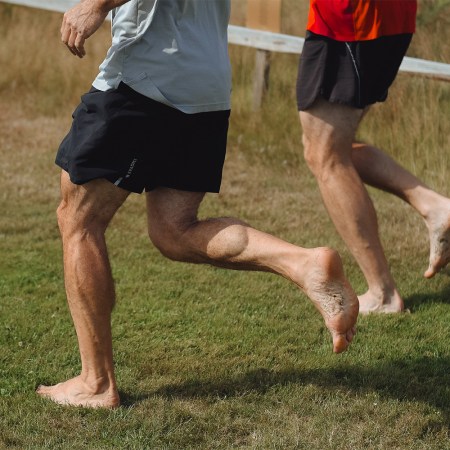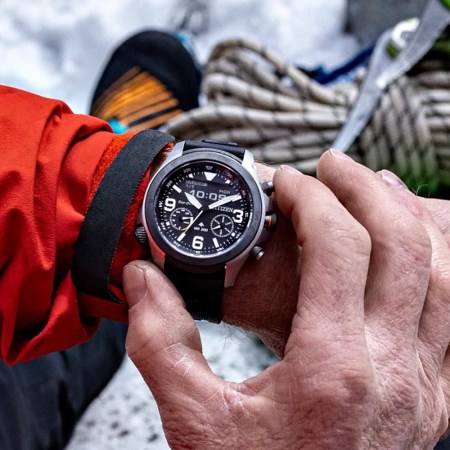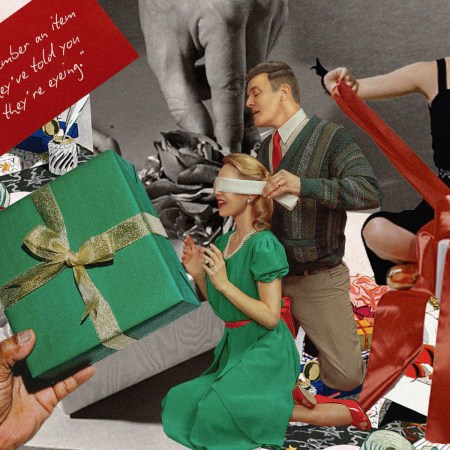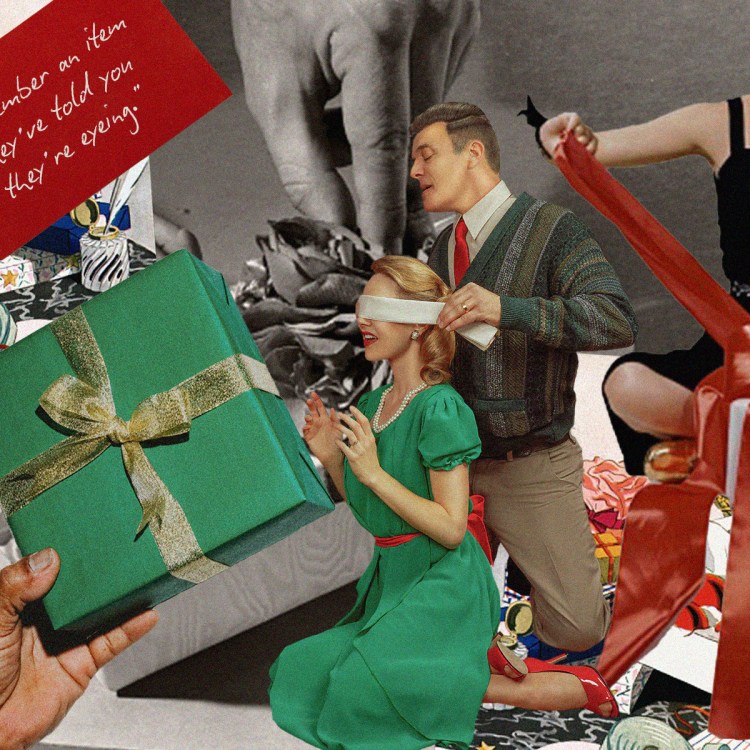Raise your hand if you’ve got lower back pain. (Careful — not too high.)
OK, so, literally everyone everywhere? Got it.
Achiness in the back is an equal opportunity offender, affecting sedentary CEOs as much as it does overworked manual laborers. But very few of us know precisely where it comes from, let alone how to prevent it.
Which is why we reached out to a couple professionals — one a veteran physician, the other a strength coach — for some wisdom on understanding and defeating an ailment that eventually catches up to just about every man who has walked this green earth.
The friends in question: Dr. Robert Zembroski, a specialist in functional medicine, clinical nutritionist, cancer victor and author of the health recovery book REBUILD, and David Jack, a fitness professional and consultant for Reebok and Men’s Health. Together, they helped us build this guide to (carefully) attacking lower back pain. Below, you’ll find physiological definitions, mythbusters, dos and don’ts, and simple, no-nonsense training advice.
Spoiler alert: sitting at your computer ain’t helping.
DEFINITIONS AND ORIGINS, ACCORDING TO DR. ZEMBROSKI
Can you give us a professional understanding of lower back pain?
Low-back pain is a symptom that affects roughly 80% of the general population. It’s the second most common reason people visit a doctor. The boilerplate complaint for pain in the lumbar region of the spine is “I have low-back pain,” but that physical discomfort actually arises from what’s known as noxious stimuli in the lumbar spine.
Basically, there are three types of pain going on down there …
- Nociceptive pain: This comes from different structures in the spine. Think joints, ligamentous structures and regions of the intervertebral discs. When mechanical dysfunction exists, the symptoms are typically described as dull, aching and gnawing, with pressure in the low back.
- Referred pain: This is a “spreading” pain. It comes from the different structures of the spine, like small zygapophyseal joints or the large sacroiliac joints (those small dimples of the low back above the buttocks). Referred pain often co-exists with local nociceptive pain. It can spread to the lower limbs.
- Radicular pain: Radicular is a little different from both nociceptive and referred pain. It’s a pain down the leg, groin or knee and is usually caused by irritation of a nerve root. (The most common term to describe a radicular pain is sciatica, which really just means pain down the leg.) Once nerve conduction is blocked along a spinal nerve, one of two scenarios will play out: If sensory fibers of nerves are blocked, you’ll experience numbness. If the motor fibers of nerves are blocked, reflexes and muscle tone are often diminished.
Very well. But how does it all start? How am I contributing to these “noxious stimuli”?
In a variety of ways! Improper lifting techniques, repetitive stress/strain and overuse, sprains or strains, trauma, poor posture, fallen arches in the feet, non-ergonomic workstations, arthritis, disc degeneration … The most common cause of low-back pain, though? Faulty spinal biomechanics, where the spinal joints become restricted in movement and inflamed. This is called facet syndrome.
Can you tell us a little more about this facet syndrome? Like, uh, how to not get it?
It comes down to altered mechanics, essentially — a lack of joint motion between the lumbar vertebrae and pelvis joints, combined with poor muscle tone and changes in blood flow to the region. This creates inflammation, which activates type-C nerve fibers called nociceptors, whose sole purpose is to detect pain. This combination of muscle-tone issues and joint restrictions can also lead to disc herniations, disc bulges, arthritis … even degenerative joint disease. There you go.
Great. Any other conditions or causes to be aware of?
There’s one more piece to this puzzle. The reason for postural muscle weakness is a misfire or neurological weakness in a part of your brain called the cerebellum. The cerebellum contains hundreds of millions of neurons (nerve cells) that relay information between the brain and the muscles involved with movement. It’s responsible for balance and equilibrium, fine movement and coordination, and the tone of your postural muscles. If the cerebellum becomes weak because of sedentary behavior and/or head and neck trauma, the signals to postural muscles weaken, leading to back pain. Surefire ways to know your cerebellum is involved with lower back pain? You get get dizzy when sitting up or getting up fast, have motion sickness on a boat, or get ill when in a car as a passenger or when reading.
I’m getting older. Is that playing a role?
Yes, unfortunately. Our bodies change with age. Some changes are brought on from unhealthy habits or rituals (inflammatory diet, smoking, a lack of exercise, carrying too much body fat). But regardless, bodies use spinal discs as shock absorbers in the spine to cushion the vertebrae. With age, these discs naturally dehydrate, causing stress on the vertebrae and the spinal joints … leading to pain. Not mention, brain circuitry atrophies over the years as we lose brain neurons. According to The Journal of Neuroscience, roughly 11% of people with chronic low-back pain have less brain volume (literally, less brain matter).
I sit all day. Is that playing a role?
A resounding yes. Sedentary movement reduces brain and cerebellar function, which causes the small muscles that support the spine to weaken. Remember, physical movement drives the brain and cerebellum. It increases the strength and tone of the postural muscles that create normal spinal biomechanics and has been known to shut off pain receptors and make people feel better. That’s one reason why pain is worse in the morning — it follows a period of little to no movement of the body and spine.
What can I do?
As sitting literally compresses the spine, try to stick your stomach out while doing so. This forces you to maintain the lumbar curve (lordosis). While sleeping, try to channel proper spinal alignment. Sleep on your side (in the fetal position) and put a pillow between your knees. This will open up the joints and reduce mechanical stressors.
Dr. Z’S 10 COMMANDMENTS FOR A HEALTHIER BACK
1. Move more
Moving the joints and muscles around the spine helps inhibit those type-C nerve fibers and nociceptors that send the brain messages of pain.
2. Practice good posture
Standing, sitting … it’s important. Doing so helps you normalize spinal biomechanics, and reduce the chance of developing or aggravating pain.
3. Keep your body fat down.
Excessive body fat and weight cause undue pressure and stress on the spine. Plus, body fat creates inflammatory compounds called adipocytokines, which can aggravate chronic-pain syndromes.
4. Eliminate particular foods
Gluten, white-refined sugar, and animal milk products increase systemic inflammation.
5. Be careful how you lift
Don’t bend over, lift and twist. Instead, bend your knees, squat down, hold the object close to the body, and use your legs to stand up. Lifting with a twist is a sure way to cause low-back pain.
6. Commute with care
If you carry a briefcase, backpack or any pack that increases stress on your spinal joints, periodically switch the hands and/or shoulders that you use to carry.
7. Stretch your hip flexors
These muscles are attached to the upper legs and the lumbar spine. To stretch your hip flexor, kneel on the floor with one knee bent and one leg behind you. Position your forward knee over your foot. Slowly push your hips forward until you feel the stretch in the upper thigh of the rear leg. Hold the stretch for a count of 10 seconds. Repeat with the other leg. Stretch 3–5 times on each side.
8. Don’t wear posture correctors
Resist. Devices that artificially create “good” posture disrupt output from the cerebellum, weakening your postural muscles and cheating yourself out of proper biomechanics.
9. Consider an ergonomic office chair
They support good posture and keep your core and postural muscles active. [Editor’s note: If you’ve got coin to spare, you can’t do much better than Herman Miller’s Cosm Collection.]
10. See a qualified chiropractic physician
When all else fails, see a professional to get to the root of your pain.
HOW TO TACKLE BACK PAIN IN THE GYM
Back pain and fitness meet at a sensitive (and potentially very painful) intersection. To help you navigate that intersection with care, trainer David Jack suggest some important “do’s and don’ts” to keep in mind before tackling total body exercises at your local gym.
Do: Master a lifting motion at a safe, manageable weight before testing your limits.
Don’t: Go to failure on a set; it’s not worth it.
Do: Keep loads (dumbbells, kettlebells, medicine balls) close to the body.
Don’t: Seek out intense bracing exercises, like heavy squats.
Do: Emphasize low cardio work, like walking, pool work and hiking.
Don’t: Favor unsupported exercises (i.e., free standing equipment).
Do: Prioritize tissue work (more on this in a bit).
Don’t: Try movements that heighten your pain.
TISSUE WORK AND STRETCHING
Tissue work can be done in the morning or at night before stretching, as a standalone or pre- and post-workout. Deploy your routine 3-4 times a week, or do some sort of tissue work each day, rotating exercises as needed. The only two tools you’ll need? A foam roller and a tennis ball. For best practices on foam rollers, see our guide here. Watch David Jack go full yogi on a tennis ball here, and find detailed descriptions of each of his moves below.
Tennis ball work …
To target the glutes: Lie on your side with a tennis ball pinned between the outside of your hip and the ground. Right where your back pocket hangs out on a pair of jeans … allow the ball to find its way into hot spots and “melt” there. Once it melts into the hot spot and you can breathe normally, move the same-side leg a bit to help release the tissue
The lower trap area: Lie on your back; move the tennis ball up and down between your shoulder blade and spine, Find the hot spots, stay in the space, allow yourself to melt and deep breathe. Once you can do that, consider moving the same-side arm over to free the area to extend that stretch.
The calves: In a seated position, place the ball under one calf with the other leg draped over it. Move the ball around and repeat the process detailed above for your lower traps.
The arches of the feet: You’re standing; move the ball from front to back under the arch, then side to side. Make sure to arrange it under the pads of your toes and just in front of your heel.
Five great stretches …
Before you tackle any of these, we suggest watching David Jack’s quick tutorial on stretching best practices.
Supine hip and hamstring: Lie on your back; draw one knee up to toward the same side armpit and hold. Breathe and try to stretch a bit further. Repeat this process until you feel you’ve reached a good stretch and hold there for 20-30 seconds. Then bend both legs, while extending the initial leg up in the air to stretch your hamstring. Try to keep the leg straight (it might be on an angle) breathe, relax and stretch a bit more. Then reverse it. To make it more dynamic, try the process with one-second holds. (Bring a knee in, stretch for a second, extend the leg, stretch for a second, return to the start. Don’t force, flow: relax and breathe easy.)
Standing hip flexor mobilization: Place one foot on a bench or box with both feet facing forward. Rock back and forth, keeping your elevated foot heel down and back leg as straight as possible (which will stretch the back hip flexor). You can place your hands on your thigh for support. Do this for 10-15 reps. Mix it up by angling your arms across your body for another set of 10-15 reps. Then switch your elevated foot.
Cat Cow to Rock Back: From an all-fours position, push your hands into the floor and arch your back like a cat, then lower your belly button down toward the floor and bow your back the other way to the “cow position.” After 2-3 reps, rock backward, lightly pushing away from your hands and pushing your backside toward your heels. Keep your chin up and eyes forward; if pain-free, pause for a moment at the back. Aim for 6-8 sets.
Quad stretch: Facing away from a table, place one foot shoelace-side-down on the tabletop. Stand tall and allow the back leg to stretch your quads. Periodically work your backside closer to the counter to increase the stretch. Take easy breaths and maintain the stretch for 45-60 seconds. Then switch feet.
Seated Hurdle stretch: Sit on the ground; bend one leg in front of you and tuck the other against your body, forming an L. Lining your belly button up with your thigh, eyes forward, chest up and hands on the ground, lean forward and stretch the front hip for a few seconds. Rock out and repeat 4-6 times holding the last stretch for 15-20 seconds. Repeat on the other side.
THREE RELIABLE EXERCISES, PERFORMED BY THE MAN HIMSELF
Step Matrix
A total body exercise that allows the body to move in different planes and safely creates movement for the spine and back.
Simple Squat Patterns
Lighter loads, less reps, slow and precise movements. Great for anyone looking to get back into shape or struggling with issues in the knees or back.
Supported Push Pull Combo
Grab a pair of dumbbells (pick them up without twisting your back) and lean back on an incline bench. Slow, steady reps, change up the tempo when needed. Then flip around on the bench (chest facing it) and pull the dumbbells up to your ribs, alternating from left to right.
Main image: Janet Knott/The Boston Globe via Getty Images
Whether you’re looking to get into shape, or just get out of a funk, The Charge has got you covered. Sign up for our new wellness newsletter today.























